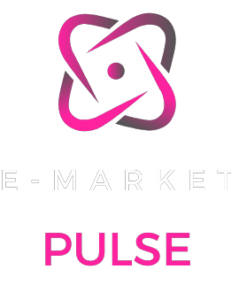

Navigating Online Marketplaces: Pros and Cons for Creators
Introduction:
For creators who make or design their own products, the decision to sell on online marketplaces is often a crucial one. Platforms like Etsy provide a vast audience, but e-sellers must weigh the pros and cons to make informed decisions about where and how to showcase their creations. This article delves into the various aspects of navigating online marketplaces, offering insights into the advantages and challenges that creators might encounter on platforms like Etsy.
Pros of Selling on Online Marketplaces:
1.Access to a Large Audience:
One of the primary benefits is the immediate access to a large and diverse audience. Online marketplaces attract millions of potential customers, increasing the visibility of your creations.
2.Established Trust and Credibility:
Reputable marketplaces, like Etsy, have already established trust and credibility with consumers. Associating your brand with a well-known platform can boost your own credibility.
3.Ease of Set-Up:
Online marketplaces often provide a user-friendly set-up process. Creators can list their products quickly without the need for extensive technical skills or a separate e-commerce website.
GET EXCLUSIVE ACCESS TO OUR EXPERTS CREATOR'S CORNER TIPS AND ADVICE:
- Get AHEAD of the Competition.
- FREE Membership to Mia’s Weekly Insiders secrets.
- FREE tailored resources and gifts.
- PLUS qualify to receive personal email support.

* We respect your privacy. We will not spam you.
4.Built-in Marketing and Advertising:
Many online marketplaces invest in marketing and advertising to drive traffic to their platform. This can significantly benefit creators by exposing their products to a broader audience.
5.Payment and Transaction Security:
Established marketplaces usually have secure payment systems in place. This provides peace of mind for both creators and customers, reducing the risk of fraudulent transactions.
Cons of Selling on Online Marketplaces:
1.High Competition:
The large audience also means high competition. It can be challenging to stand out among the vast number of products, requiring creators to invest in strategic marketing and branding efforts.
2.Fees and Commissions:
Online marketplaces typically charge fees and commissions on each sale. While this is a convenient way to start selling, it can impact the overall profitability of the business.
3.Limited Brand Control:
Selling on a marketplace means adhering to its guidelines and restrictions. Creators have limited control over the overall branding and presentation of their shop compared to having an independent website.
4.Dependency on Marketplace Policies:
Creators are subject to the policies of the marketplace. Changes in terms of service, algorithm updates, or fee structures can directly impact a creator’s business strategy and profitability.
5.Restricted Customer Relationships:
While marketplaces connect creators to customers, the relationship is often limited. Creators may have restricted access to customer data, making it challenging to establish direct communication or build a loyal customer base.
Strategies for Success on Online Marketplaces:
1.Optimize Product Listings:
To stand out, optimize product listings with compelling descriptions and high-quality images. Use relevant keywords to enhance search visibility within the marketplace.
2.Build a Strong Brand Presence:
Despite limitations, creators can build a distinct brand presence within their marketplace. Consistent branding, a unique aesthetic, and compelling storytelling can set you apart.
3.Utilize Marketing Features:
Take advantage of marketing features provided by the marketplace. This may include sponsored listings, promotions, or social media integrations to boost visibility and sales.
4.Diversify Sales Channels:
While selling on a primary marketplace, consider diversifying sales channels. Explore opportunities to sell on multiple platforms or build an independent website to reduce dependency on a single marketplace.
5.Engage with the Community:
Participate in the marketplace community. Engage with customers through reviews, respond to inquiries promptly, and join forums or groups to connect with other creators and potential customers.
Choosing the Right Online Marketplace:
1.Understand Your Target Audience:
Different marketplaces cater to different demographics. Understand your target audience and choose a platform where your creations align with the preferences of potential customers.
2.Evaluate Fees and Policies:
Carefully review the fees and policies of each marketplace. Compare the commission structures, listing fees, and any additional costs to determine the impact on your overall profitability.
3.Research Competitor Presence:
Investigate the presence of competitors. Analyze whether similar creators thrive on a particular platform and if there’s room for your products without facing excessive competition.
4.Consider Marketplace Specialization:
Some marketplaces specialize in specific niches or product categories. Evaluate whether your creations align with the specialization of a marketplace to increase visibility among a more targeted audience.
5.Read and Understand Reviews:
Research reviews from other sellers. Insights from fellow creators can provide valuable information about the marketplace’s support, communication, and overall experience.
Building a Transition Plan:
1.Gradual Transition to Independence:
For creators considering independence, plan a gradual transition. Build an independent website while maintaining a presence on the marketplace to retain existing customers.
2.Promote Direct Sales:
Encourage direct sales. Offer promotions or incentives for customers to purchase directly from your website, gradually transitioning them away from the marketplace.
Conclusion:
Navigating online marketplaces as a creator involves a careful consideration of the pros and cons. While these platforms provide immediate access to a vast audience and built-in trust, creators must contend with high competition, fees, and limited brand control. By implementing strategic approaches, optimizing product listings, and choosing the right marketplace, e-sellers can make informed decisions to maximize their success within the dynamic world of online selling.
MORE LIKE THIS...
Bringing you the latest information, ideas, products and services for your E-commerce business.
Copyright 2024 E-Market Pulse
Contact Us
We may receive compensation from partners listed through affiliate partnerships, at no cost to you. This doesn’t influence our ratings, and the opinions are our own
Subscribe to our Newsletter
Get updates on products and services specially targeted to help you succeed.
